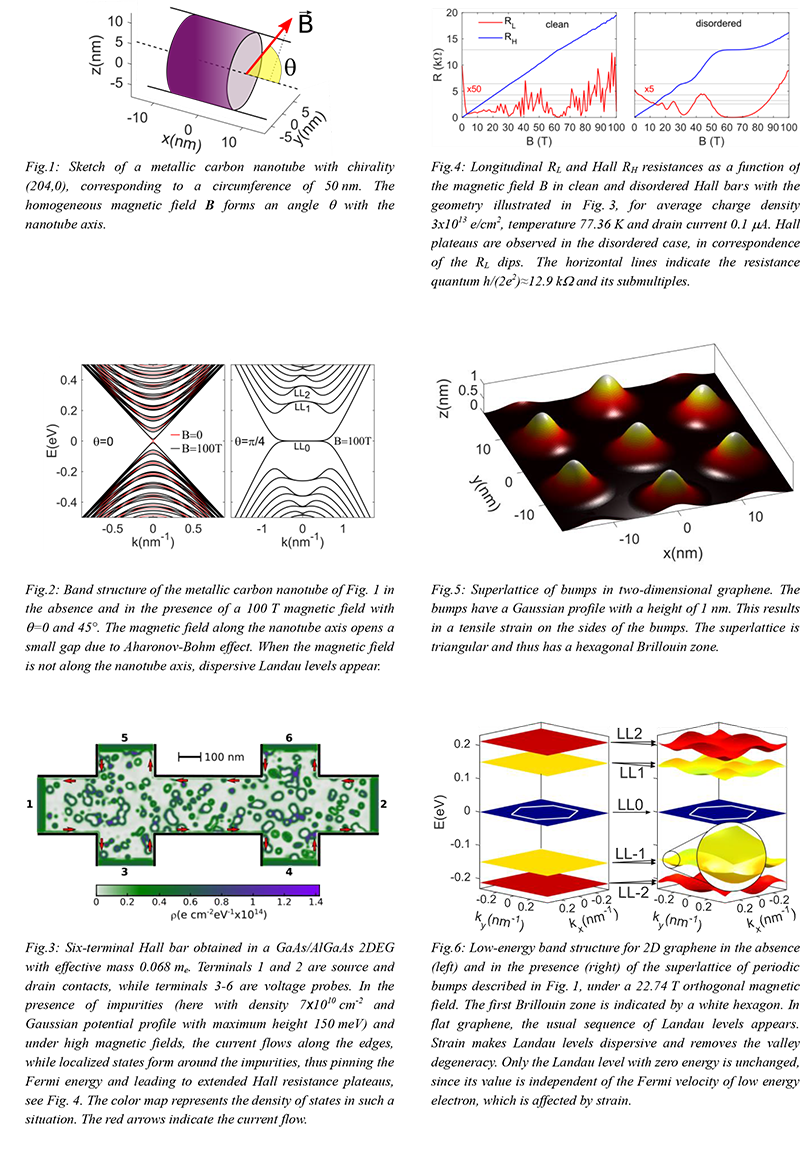IWCN 2021: A Practical Peierls Phase Recipe for Periodic Atomistic Systems Under Magnetic Fields
Category
Published on
Abstract
The Peierls phase conveniently describes the orbital effect of a relatively weak magnetic field B on atomistic systems represented by a tight-binding-like Hamiltonian [1]. The phase multiplies the Hamiltonian elements between couples of atomic orbitals and is proportional to the line integral of the vector potential A (with B = ∇ × A) along the straight path between them. The Peierls phase changes under gauge transformations A → A + ∇χ, but its circulation as well as the physical observables are gauge independent.
For periodic systems, or systems with periodic components (as contacts and probes in a Hall bar), a generic gauge will not guarantee the Hamiltonian to be invariant under spatial translations. However, this invariance is desirable to allow the use of convenient techniques for electronic structure and transport simulations, as the Bloch theorem for the Hamiltonian diagonalization, or the Sancho-Rubio algorithm [2] for determining the contact self-energies.
In this contribution, by a proper gauge choice, I will provide general ready-to-use formulas to determine Peierls phase factors that preserve the translation symmetry of any periodic quasi-one-dimensional or two-dimensional system under a homogeneous magnetic field [3]. Some examples of applications will be briefly illustrated, see figures. First, I will present the case of a metallic carbon nanotube in high magnetic fields. Depending on the angle between field and nanotube axis, the electronic structure exhibits a rich physics ranging from Landau states to Aharonov-Bohm effect. Then, based on Green’s function transport simulations, we will discuss the importance of disorder for the observation of extended Hall resistance plateaus in 2DEG Hall bars. Finally, I will present the case of periodic 2D graphene with Gaussian bumps, where the induced strain makes Landau levels dispersive and lifts the valley degeneracy.
The provided formulas represent a practical and useful tool for the simulation of electronic and transport properties of mesoscopic systems in the presence of magnetic fields.

Sponsored by
References
- [1] R. Peierls, Z. Phys., 80, 763 (1933).
- M. P. Lopez Sancho et al., J. Phys. F, 15, 851 (1985).
- A. Cresti, Phys. Rev. B., 103, 045402 (2021).
Cite this work
Researchers should cite this work as follows: